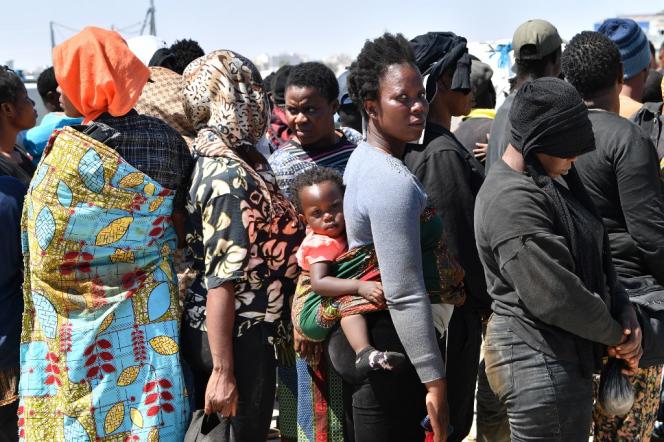At a time when the arrival of migrant boats on the island of Lampedusa is increasing from Tunisia, Tunis is intensifying its operations against sub-Saharan nationals still present in Sfax, the country’s second city. Supporting photos, the Ministry of the Interior announced on Sunday September 17 that it had evacuated the historic center of the city, where hundreds of migrants had found refuge after being evicted from their accommodation in early July. They were then the subject of a manhunt, with the support of the police. “This security campaign was well received by residents of the region, especially after the restoration of public order and the evacuation of public squares”welcomed the Ministry of the Interior in a press release published at the end of the day.
Earlier in the week, the latter had already warned the organizations helping the migrants and, according to a volunteer present on site who requested anonymity, prevented the volunteers from providing assistance. Transported on Saturday and Sunday in buses from the regional transport company of Sfax, hundreds of people were thus moved to rural areas a few dozen kilometers away, particularly in the localities of Jebeniana and Al-Amra.
“A purely security response”
“There was no resistance because they were made to believe that they were going to be taken care of in camps, when they were thrown in the middle of olive fields”, deciphers Romdhane Ben Amor, spokesperson for the Tunisian Forum for Economic and Social Rights (FTDES), a local NGO. Videos shared on social networks show residents of these localities protesting against the arrival of buses, escorted by national guard vehicles, transporting migrants dislodged from the center of Sfax and deposited in the middle of the road in the countryside. “The response of the Tunisian authorities is purely security and similar to European policy. We reproduce the same errors,” denounces Mr. Ben Amor.
After the days of extreme tension which followed the death of a Tunisian on July 3, killed in a brawl with sub-Saharan migrants according to the official version, hundreds of sub-Saharan African nationals were expelled from Sfax and taken in the desert on the borders of Algeria and Libya. Abandoned without water or food in scorching heat, at least 25 of them had perished, according to humanitarian sources, while hundreds of others had traveled tens of kilometers on foot before being rescued, placed in shelters. more or less official or relaxed reception centers.
This time, the migrants were moved to coastal areas, north of Sfax, known to be preferred departure points towards the Italian coasts, particularly the island of Lampedusa, located less than 150 km away. “There are hundreds of migrants who were already here in Al-Amra since what happened in July, they stay there for days, even weeks, before boarding, it is one of the main areas departure in the region »testifies Wahid Dahech, an activist present on site. “It seems like they are pushing them to leave, when they can’t even afford to pay for their crossing. We lead them to death”castigates Romdhane Ben Amor.
“Propaganda”
Since September 11, the small island of Lampedusa, which has 7,000 inhabitants, has recorded a record number of arrivals of makeshift boats from Tunisia. In less than seventy-two hours, it welcomed up to 6,800 people, mainly from sub-Saharan Africa. Two months after the signing of a memorandum of understanding between Tunisia and the European Union (EU) aimed at increasing border control in the southern Mediterranean, Tunisian authorities seem overwhelmed by a growing number of departures to Europe.
In July, the spokesperson for the Tunisian National Guard told the World that more than 30,000 migrants had been intercepted in the first six months of 2023, a number which has increased more than tenfold since 2019. “There is an exhaustion of the security system which lacks resources and has been working continuously for several months”believes Romdhane Ben Amor, while the EU had committed, in imprecise terms, to “provide adequate additional financial support, particularly for acquisitions, training and technical support necessary to further improve the management of Tunisian borders”as stipulated in the agreement concluded between the two parties and which is slow to be implemented.
According to several NGOs in Tunisia, these mass departures were favored by mild weather and a drop in the price of the crossing offered on average to 1,500 dinars per person (less than 500 euros) compared to almost 2,000 euros on average in 2022. A decline which can be explained by the use of metal boats, cheaper to produce but also more fragile. These departures are also explained by the living conditions of sub-Saharan migrants “which have deteriorated significantly since they can no longer find housing or work. Some of them thought they would organize their migration project over a long period of time but had to rush their departure”, explains the head of the FTDES. For the latter, the official discourse on the fight against smuggling networks, both from Tunisia and the EU, falls under the “propaganda”.
